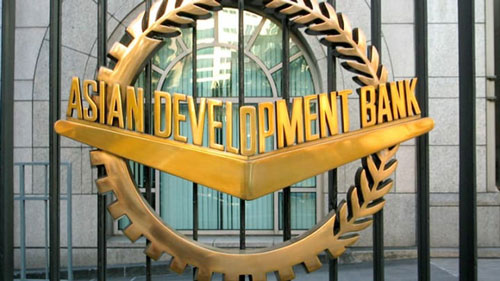Islamabad
The Asian Development Bank (ADB) on Tuesday said the improvement in Pakistan’s GDP growth rate was supported by the strong industrial growth coupled with steady remittance inflows.
“The government of Pakistan estimated the GDP growth at 3.9% in FY2021-ended 30 June 2021, the improvement underpinned by strong growth in industry and services and steady remittance inflow,” the ADB said in a supplement “Asian Development Outlook” released on Tuesday.
It said the inflation in Pakistan averaged 8.8% in the first 11 months of FY2021 on rising global commodity prices, especially for food and crude oil.
Meanwhile the ADB projected 7.2% economic growth for developing Asia this year, compared with its 7.3% forecast in April, as renewed coronavirus disease (Covid-19) outbreaks slow the recovery in some economies in the region. The growth outlook for 2022 is upgraded to 5.4% from 5.3%.
Excluding the newly industrialized economies of Hong Kong, China; the Republic of Korea; Singapore; and Taipei,China, developing Asia’s updated growth outlook is 7.5% for 2021 and 5.7% for 2022, compared with earlier projections of 7.7% and 5.6%, respectively.
The supplement to ADB’s flagship economic publication, Asian Development Outlook (ADO) 2021, provides updated projections for the region’s economies and inflation levels amid the Covid-19 pandemic.
“Asia and the Pacific’s recovery from the Covid-19 pandemic continues, although the path remains precarious amid renewed outbreaks, new virus variants, and an uneven vaccine rollout,” said ADB Chief Economist Yasuyuki Sawada.
“On top of containment and vaccination measures, phased and strategic rejuvenation of economic activities—for instance, trade, manufacturing, and tourism—will be key to ensure that the recovery is green, inclusive, and resilient.”
The Covid-19 pandemic remains the biggest risk to the outlook, as outbreaks continue in many economies. Daily confirmed cases in the region peaked at about 434,000 in mid-May.
They narrowed to about 109,000 at the end of June, concentrated mainly in South Asia, Southeast Asia, and the Pacific.
Meanwhile, the vaccine rollout in the region is gaining pace, with 41.6 doses administered per 100 people by the end of June above the global average of 39.2, but below rates of 97.6 in the United States and 81.8 in the European Union.
East Asia’s growth outlook for 2021 is raised to 7.5%, from 7.4% in April, amid a stronger-than-expected recovery by the newly industrialized economies of Hong Kong, China; the Republic of Korea; and Taipei,China. The subregional growth forecast for 2022 is retained at 5.1%.
The growth outlook for the People’s Republic of China is likewise maintained at 8.1% this year and 5.5% in 2022, amid steady performances by industry, exports, and services.This year’s growth outlook for Central Asia has been raised to 3.6%, from 3.4% in the April forecast.
This is mainly due to an improved outlook for Armenia, Georgia, and Kazakhstan—the subregion’s largest economy.
Central Asia’s outlook for 2022 remains at 4.0%.Projections for South Asia, Southeast Asia, and the Pacific for 2021 are lowered as renewed outbreaks are met with containment measures and restrictions, hampering economic activity. South Asia’s growth outlook for fiscal year 2021 is lowered to 8.9% from 9.5%. —APP










